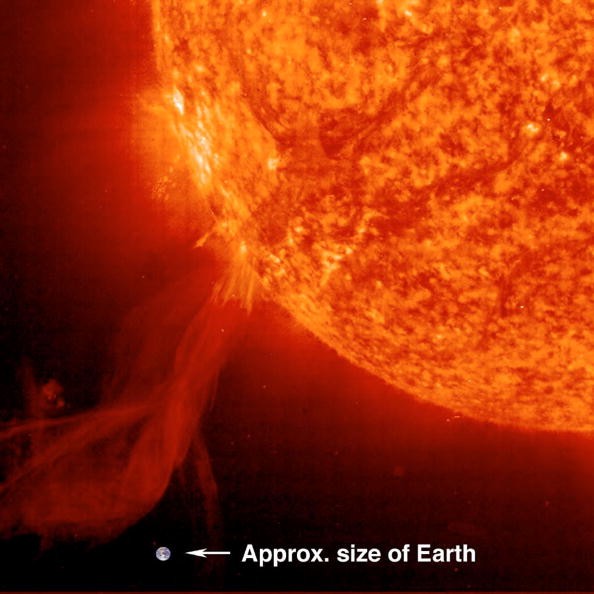Living creatures might be sent back into the dark ages if a highly destructive solar storm hits Earth, according to a new study.
This is the first time astronomers have seen a powerful form of this celestial event barely 100 light-years away, as per researchers from the University of Colorado-Boulder. There is a concern that similar event may hit Earth.

What Could Happen if Similar Event Hit Earth?
Solar flares may destroy satellites in orbit and bring down electrical systems serving whole cities, resulting in widespread blackouts and knocked out phone lines, according to the study's findings.
Known as EK Draconis (Latin for "dragon"), the star's name refers to the dragon-like nature of its fiery blast. It is located in the constellation Draco, in the extreme north of the night sky, according to researchers.
A coronal mass ejection (CME) is a kind of ejection that occurs when a star releases a cloud of very hot particles (plasma) into space, according to Fox 59.
This might be severe news in our solar system. These clouds are released by the Sun every 100 years or so. Earth and human civilization might face "catastrophic consequences," according to scientists who have studied "coronal mass ejections."
Also Read: Incoming Solar Storm Expected to Hit Earth as Experts Detect Hole in the Sun
Most Potent Ejection Ever Recorded
International experts saw EK Draconis' incredible burst of energy. It was much more powerful than any ever witnessed. By the end of the century, experts believe the solar system will be struck by a massive solar storm.
It's possible that the storm might be just as powerful as EK Draconis, according to Kosuke Namekata, a PhD student at Japan's National Astronomical Observatory. The star, which resembles a younger version of the Sun, was studied using telescopes on the ground and in orbit.
More than 10 times the previous record from a sun-like star, it produced a massive amount of searing plasma in the quadrillions of kilograms. According to Dr. Notsu, this occurrence serves as a warning of the dangers of space weather.
After a star releases a flare, which is a blast of radiation that travels far into space, CMEs are more likely to occur. Young sun-like stars everywhere around the galaxy are subject to periodic "superflares," according to previous research by the same team.
Tens of thousands or maybe hundreds of thousands of times more powerful than our own solar flares. The Earth's Sun might hypothetically experience a similar superflare, resulting in an equally massive coronal mass ejection (CME).
"Superflares are much bigger than the flares that we see from the sun," Notsu added. "So we suspect that they would also produce much bigger mass ejections. But until recently, that was just conjecture."

Is it Possible For the Old Sun to do the Same?
A "strange star," EK Draconis is nearly the same size as the Sun yet is barely 100 million years old, according to researchers.
Dr. Notsu said: "It's what our sun looked like 4.5 billion years ago."
During the winter and spring of last year, the study's authors kept a close eye on the night sky. Astronomers scanned it using NASA's TESS (Transiting Exoplanet Survey Satellite) and SEIMEI telescopes, which are located in Japan and China.
They were fortunate on April 5, 2020, when EK Draconis exploded into a gigantic superflare. A CME erupted from the star's surface 30 minutes later.
Super CMEs, despite the ominous warning, are likely to be more common in older stars, according to astronomers. It is possible that they were far more frequent in the early years of the solar system. In other words, massive coronal mass ejections may have shaped planets like Earth and Mars into their current form.
Related Article: Can We Survive a Catastrophic Solar Storm? What to do When a Solar Flare Hits Earth
For more news, updates about solar storms and similar topics don't forget to follow Nature World News!
© 2024 NatureWorldNews.com All rights reserved. Do not reproduce without permission.





